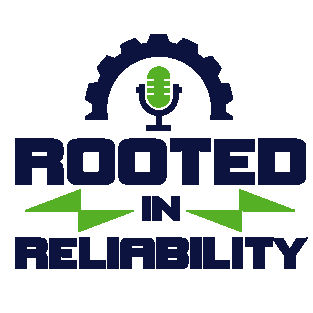
Rooted in Reliability: The Plant Performance Podcast
James Kovacevic
A weekly Maintenance and Reliability podcast covering common industry challenges and what you can learn from them. Each episode dives deeper into critical issues and explains how you can begin correcting theses maintenance flaws today. Sharing new tips and techniques to help you achieve industry best practice and shining a light on widely debated maintenance topics with special guest experts.
- 316-The Frustrations of Reliability: From Strategy to Synergy with Bob Latino and Ken LatinoThe Frustrations of Reliability: From Strategy to Synergy with Bob Latino and Ken Latino Welcome Bob and Ken Latino to the Podcast. Bob has been to this Podcast before discussing defect elimination and is an author involved with RCA and other reliability items. Briefly, Ken, can you introduce yourself. I worked with Bob and my […]7 June 2022, 10:30 am
- 315 – Prioritizing Initiatives with Paul DaoustPrioritizing Initiatives with Paul Daoust Welcome Paul to the Podcast. Paul is the founder of Scio Asset Management. Although, briefly, tell us about yourself. I have almost 30 years experience in engineering reliability maintenance and both strategic and holistic asset management. At Scio we are providing frameworks for leadership in asset management that is based […]31 May 2022, 10:30 am
- 314 – Clean Energy with Howard PenroseClean Energy with Howard Penrose Welcome back Howard to the Podcast. Howard is the founder of Motordoc and is heavily involved with IEEE and SMRP. Though, briefly, tell us about yourself. My entire career has been about electric machines and systems from my time in the Navy. I later had short stints both in repair […]24 May 2022, 10:30 am
- 313 – Decarbonization and the Impact on Maintenance with Steven DobieDecarbonization and the Impact on Maintenance with Steven Dobie Welcome Steven to the podcast. Steven is a co-host of another podcast called Maintenance Disrupted. However briefly, tell us more about yourself. I am a maintenance and reliability engineer in the mining industry who has been in tech for a couple of years. Presently working with […]17 May 2022, 10:30 am
- 312 – Cost vs Benefit of Inspection with Dane BoersCost vs Benefit of Inspection with Dane Boers Welcome Dane back to the podcast. We last talked about asset modelling and factors that influence those assets. Today we will talk about optimising strategies; how we determine cost vs benefit of strategies. But first, give a brief introduction of yourself and Modla. Modla is an asset […]10 May 2022, 10:30 am
- 311 – Defect Elimination with Doug PlucknetteDefect Elimination with Doug Plucknette Welcome Doug back to the podcast. Doug is the Author, President and Owner of Reliability Solutions Inc. Though briefly, give an introduction of yourself. I started my reliability consultancy career back in 1999 after serving in several capacities at different organisations. Although currently semi-retired, I still respond to past clients […]3 May 2022, 10:30 am
- 310 – Name Your Spare Parts Correctly with Conrad Greer310 – Name Your Spare Parts Correctly with Conrad Greer It is my pleasure to welcome Conrad Greer to the podcast, the founder of SPCResults. In this episode we covered: What is data cleansing? Why do we want to standardize our material information? Is MPN a saving grace? Why do we want to standardize our […]26 April 2022, 10:30 am
- 309 – Optimizing Energy Efficiency of Rotating Equipment with Simon JagersOptimizing Energy Efficiency of Rotating Equipment with Simon Jagers It is my pleasure to welcome back Simon Jagers, one of the founders of Samotics, an industrial analytics company that helps clients improve reliability and sustainability, particularly of their rotating equipment. In this episode we covered: Why is energy efficiency so important for organizations? What can […]19 April 2022, 10:30 am
- 308 – Determining Training ROI with Lucas MarinoDetermining Training ROI with Lucas Marino It is my pleasure, to welcome back Lucas Marino to the podcast, working at The East Partnership dealing with submarine logistics. In this episode we covered: Why do you need training? How do we calculate that ROI? Why are organizations hesitant to invest in training? There are a lot […]12 April 2022, 10:30 am
- 307 – The Evil Ways of MTBF with Fred SchenkelbergThe Evil Ways of MTBF with Fred Schenkelberg It’s my pleasure to welcome Fred Schenkelberg back to the podcast. He is a reliability engineer and management consultant. In this episode we covered: What is MTBF? Why would people want to calculate what that average time between failure is or where did this come about? What […]5 April 2022, 10:30 am
- 306 – RCM Implementation with Nancy ReganRCM Implementation with Nancy Regan It is my pleasure to welcome back Nancy Regan to the podcast, the founder of RCMtrainingonline.com. In this episode we covered: What is an RCM implementation? What challenges do you see within organizations as they go to implement the findings from their analysis? What do you believe is the most […]29 March 2022, 10:30 am
- More Episodes? Get the App